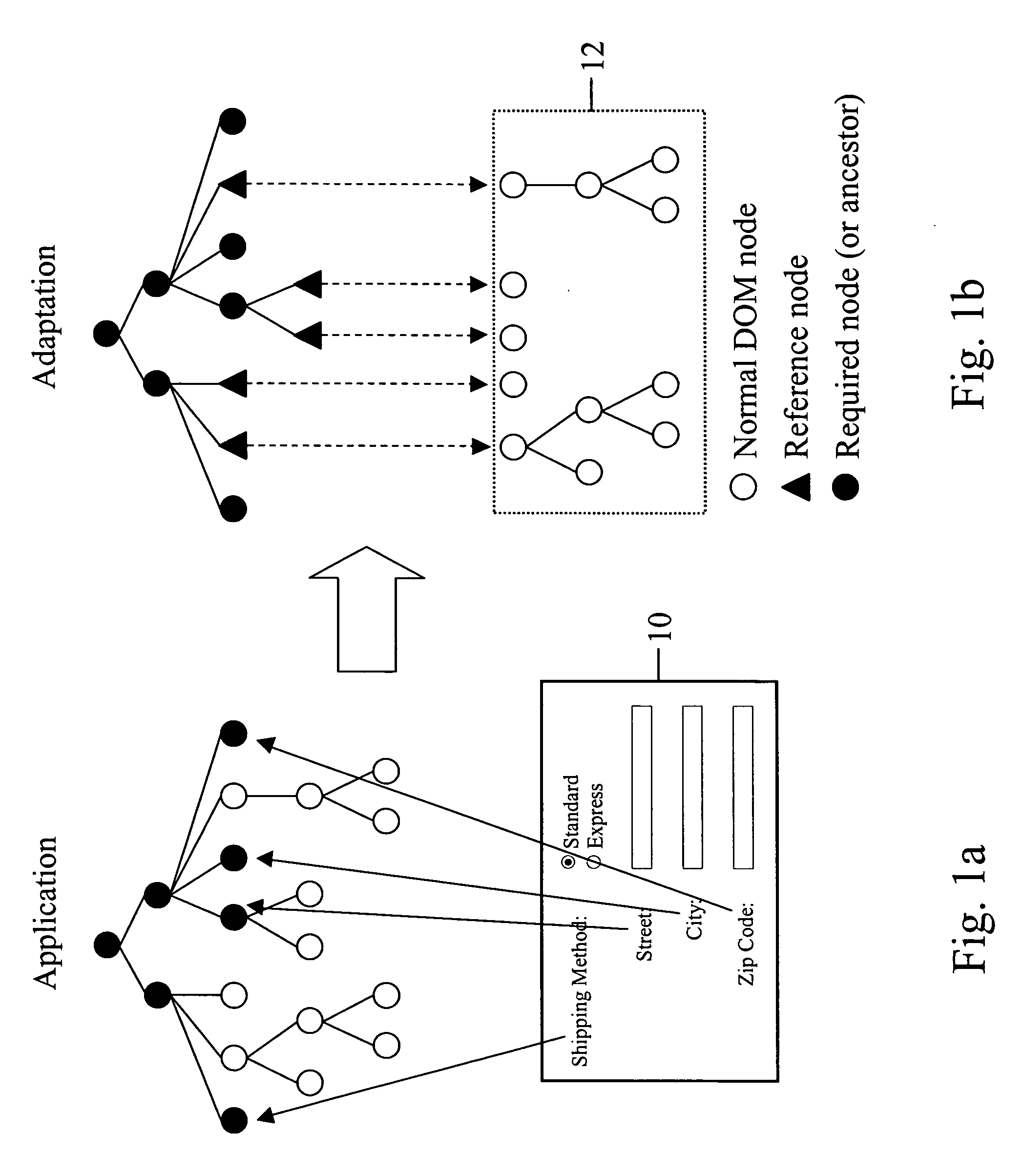Form related data reduction
a data reduction and form technology, applied in the field of data communication, can solve the problems of large xml documents, waste of large xml documents, and achieve the effect of reducing the consumption of network bandwidth, time, money and terminal storag
- Summary
- Abstract
- Description
- Claims
- Application Information
AI Technical Summary
Benefits of technology
Problems solved by technology
Method used
Image
Examples
Embodiment Construction
[0040] Reference will now be made in detail to the embodiments of the present invention, examples of which are illustrated in the accompanying drawings.
[0041]FIGS. 1a, 1b, 2, 3a and 3b illustrate one embodiment of the method in accordance with the invention.
[0042]FIG. 1a discloses a tree view of form related data within an application. In one embodiment, the form related data refers to extensible markup language data (XML), the tree view refers to a document object model (DOM) tree view and the user interface description refers to an XForms document. In general, the term form related data is used to describe the data structure stored in a memory or file system, wherein the data structure is binary or textual format, hierarchical or tree like in nature and related to a form or user interface description. Therefore, the form related data may refer to any other appropriate data other than the extensible markup language data.
[0043] Filled circles represent nodes or ancestors that are...
PUM
 Login to View More
Login to View More Abstract
Description
Claims
Application Information
 Login to View More
Login to View More - R&D
- Intellectual Property
- Life Sciences
- Materials
- Tech Scout
- Unparalleled Data Quality
- Higher Quality Content
- 60% Fewer Hallucinations
Browse by: Latest US Patents, China's latest patents, Technical Efficacy Thesaurus, Application Domain, Technology Topic, Popular Technical Reports.
© 2025 PatSnap. All rights reserved.Legal|Privacy policy|Modern Slavery Act Transparency Statement|Sitemap|About US| Contact US: help@patsnap.com



